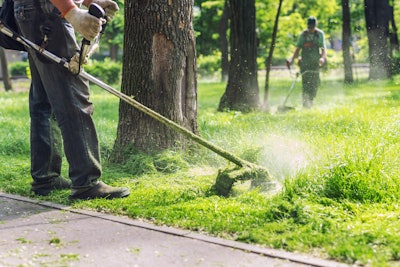
According to Jobber, the home services economy is showing signs of stabilization. Data says that the demand for services has been evolving with homeowners prioritizing essential services and value-driven investments, which should create the opportunity for businesses to remain agile, manage costs, and continue to work.
Jobber released its Q1 2025 Home Service Economic Report, compiling data from more than 250,000 residential cleaners, landscapers, HVAC technicians, electricians, plumbers, and more. The report is available at GetJobber.com/home-service-reports/may-2025/.
"There's real potential ahead for those prepared to meet the moment," says Sam Pillar, CEO and co-founder of Jobber.
The Q1 2025 edition looks at the surveyed data compiled with external economic indicators to provide comprehensive insight into the trends shaping one of the fastest-growing and most essential parts of the small business economy, Home Service.
While inflation cooled and household spending remained steady, elevated interest rates and cautious consumer sentiment continued to limit demand for large-scale, financed projects. As a result, homeowners shifted toward practical, value-oriented services.
Digital payments accounted for 47 percent of all transactions in Q1, up from 43 percent a year prior, highlighting homeowners' growing expectations for ease, speed, and professionalism in their service experience.
Highlights on Green & Contracting
Home Service businesses experienced mixed results in Q1 2025, with revenue stability driven by smaller, recurring jobs in segments like Green and Cleaning, while larger, discretionary projects in Contracting and Construction continued to face headwinds. A deeper breakdown is as follows:
Green: Started the year strong, with an 8 percent year-over-year increase in new work scheduled in January. Bookings dipped mid-quarter, but revenue rose 6 percent year-over-year due to bundled services and modest price increases.
Contracting: Demand for core repair and diagnostic services remained steady, but growth was flat. New work scheduled declined 4 percent year-over-year, and revenue saw a modest 1 percent gain.
"The Q1 data shows a sector in transition — stable, but still under pressure from high borrowing costs and cautious consumer behavior," said Abheek Dhawan, Senior Vice President of Strategy & Analytics at Jobber. "We're seeing nuanced shifts of essential services holding strong, while larger projects appear to lag. This kind of segmented, ground-level insight is critical for understanding where the market is heading and how businesses can plan for what's next."

![Doosan Bobcat Wacker Neuson Stack 2ec Js Pb V6e[1]](https://img.greenindustrypros.com/mindful/acbm/workspaces/default/uploads/2025/12/doosan-bobcat-wacker-neuson-stack2ecjspbv6e1.CPyyz8ubHn.png?auto=format%2Ccompress&bg=fff&fill-color=fff&fit=fill&h=100&q=70&w=100)








![Doosan Bobcat Wacker Neuson Stack 2ec Js Pb V6e[1]](https://img.greenindustrypros.com/mindful/acbm/workspaces/default/uploads/2025/12/doosan-bobcat-wacker-neuson-stack2ecjspbv6e1.CPyyz8ubHn.png?ar=16%3A9&auto=format%2Ccompress&bg=fff&fill-color=fff&fit=fill&h=135&q=70&w=240)








